K53 Prohibition Signs
Prohibition road signs are crucial for maintaining order and safety on South African roads. These signs inform drivers about actions or behaviors that are not allowed. Understanding these signs is essential for safe driving and passing your K53 learner's license test.
Common Prohibition Signs in South Africa
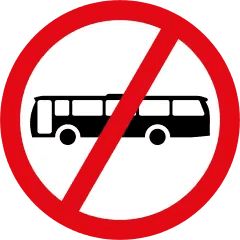
Buses Prohibited
Indicates that buses are not allowed on this road.
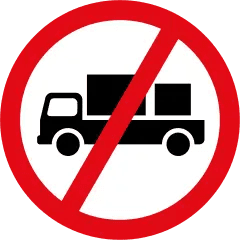
Delivery Vehicles Prohibited
Indicates that delivery vehicles are not allowed on this road.
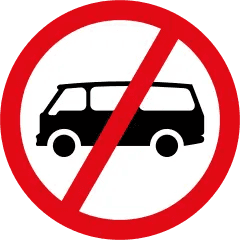
Mini-Buses Prohibited
Indicates that mini-buses are not allowed on this road.
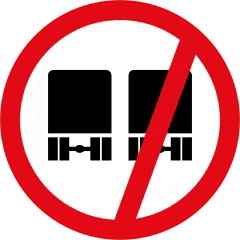
Overtaking Prohibited for Heavy Vehicles
Indicates that heavy vehicles are not allowed to overtake on this stretch of road.

Parking Prohibited
Indicates that parking is not allowed in this area.
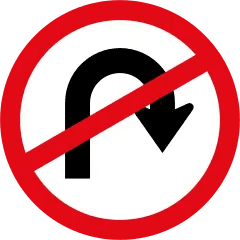
U-Turn Prohibited
Indicates that U-turns are not allowed at this location.

Unauthorised Vehicles Prohibited
Indicates that only authorised vehicles are allowed in this area.
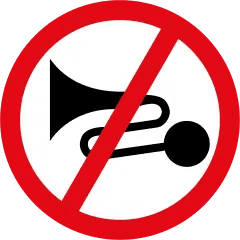
Excessive Noise Prohibited: Hooting Prohibited
Indicates that making excessive noise, particularly hooting, is prohibited.
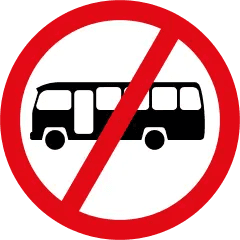
Midi-Buses Prohibited
Indicates that midi-buses are not allowed on this road.
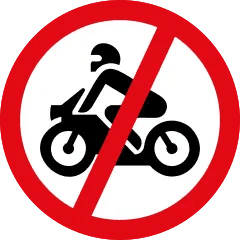
Motorcycles Prohibited
Indicates that motorcycles are not allowed on this road.
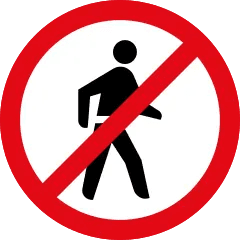
Pedestrians Prohibited
Indicates that pedestrians are not allowed in this area.
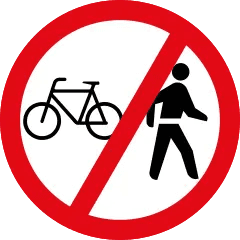
Cyclists and Pedestrians Prohibited
Indicates that both cyclists and pedestrians are not allowed on this road.
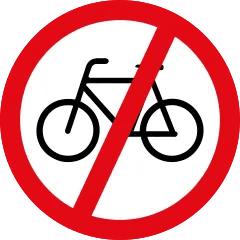
Cyclists Prohibited
Indicates that cyclists are not allowed on this road.
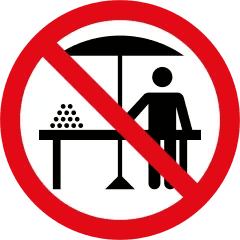
Hawkers Prohibited
Indicates that street vendors or hawkers are not allowed in this area.
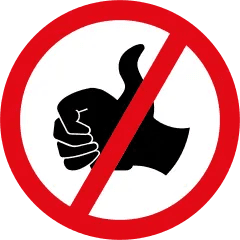
Hitch-Hiking Prohibited
Indicates that hitch-hiking is not allowed in this area.
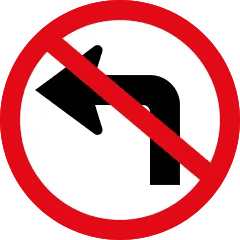
Left Turn Prohibited Ahead
Indicates that left turns will not be allowed at an upcoming intersection.

Left Turn Prohibited
Indicates that left turns are not allowed at this intersection.
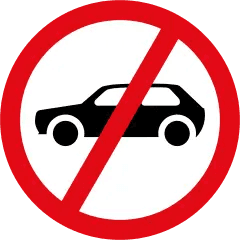
Motorcars Prohibited
Indicates that private motorcars are not allowed on this road.

Overtaking Prohibited
Indicates that overtaking is not allowed for any vehicles on this stretch of road.
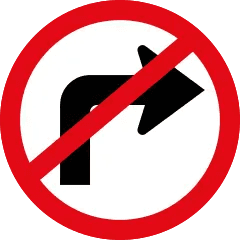
Right Turn Prohibited Ahead
Indicates that right turns will not be allowed at an upcoming intersection.
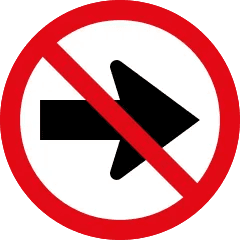
Right Turn Prohibited
Indicates that right turns are not allowed at this intersection.
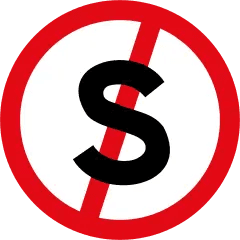
Stopping Prohibited
Indicates that stopping is not allowed in this area.

Taxis Prohibited
Indicates that taxis are not allowed in this area.
Understanding Prohibition Road Signs
Prohibition road signs are designed to clearly indicate actions that are not permitted on the road. These signs are easily recognizable and play a vital role in traffic management and road safety. Key features of prohibition road signs include:
- Circular shape with a red border
- White background with black symbols or text
- A red diagonal line crossing the sign (in most cases)
- Clear, simple imagery depicting the prohibited action
Prohibition signs are legally enforceable, and drivers must obey them at all times unless directed otherwise by a traffic officer or temporary signage.
Importance of Prohibition Road Signs in South African Driving
Prohibition road signs serve several crucial purposes on South African roads:
- Safety: They prevent dangerous actions that could lead to accidents.
- Traffic Flow: By restricting certain movements, they help maintain smooth traffic flow.
- Environmental Protection: Some signs prohibit actions that could harm the environment.
- Infrastructure Preservation: They protect roads and bridges from damage by restricting certain vehicle types.
- Noise Control: Certain prohibition signs help reduce noise pollution in sensitive areas.
Mastering prohibition road signs is crucial for passing your K53 test and becoming a responsible driver on South African roads. These signs form an essential part of the traffic law knowledge that every driver must possess.
Tips for Recognizing and Responding to Prohibition Road Signs
To effectively understand and obey prohibition road signs:
- Always be on the lookout for circular signs with red borders.
- Pay attention to the specific symbol or text within the sign.
- Remember that prohibition signs take effect from the point where they are placed.
- Be aware that some prohibitions may be time-specific or apply only to certain vehicle types.
- If you're unsure about a sign's meaning, err on the side of caution and avoid the potentially prohibited action.
- Practice identifying these signs regularly using the K53 Learners App to improve your recognition speed and accuracy.
- Remember that ignoring prohibition signs is not only dangerous but also a legal offense.
Frequently Asked Questions about Prohibition Road Signs
What's the difference between prohibition and warning signs?
Prohibition signs indicate actions that are not allowed and are legally enforceable. They are typically circular with a red border. Warning signs, on the other hand, alert drivers to potential hazards but do not prohibit actions. Warning signs are usually triangular with a red border.
Are all circular signs with red borders prohibition signs?
While most circular signs with red borders are prohibition signs, there are exceptions. For example, the stop sign is octagonal, and some mandatory action signs (like "turn left") are circular with a blue background.
What should I do if I see a prohibition sign that seems to conflict with the current road situation?
Always obey the prohibition sign unless directed otherwise by a traffic officer or temporary signage. If you frequently notice a sign that seems inappropriate for its location, you can report it to your local traffic department for review.
Can prohibition signs be overridden by temporary signs or traffic officers?
Yes, in cases of road works, special events, or emergencies, temporary signs or directions from traffic officers can override permanent prohibition signs. Always follow the most current instructions provided.